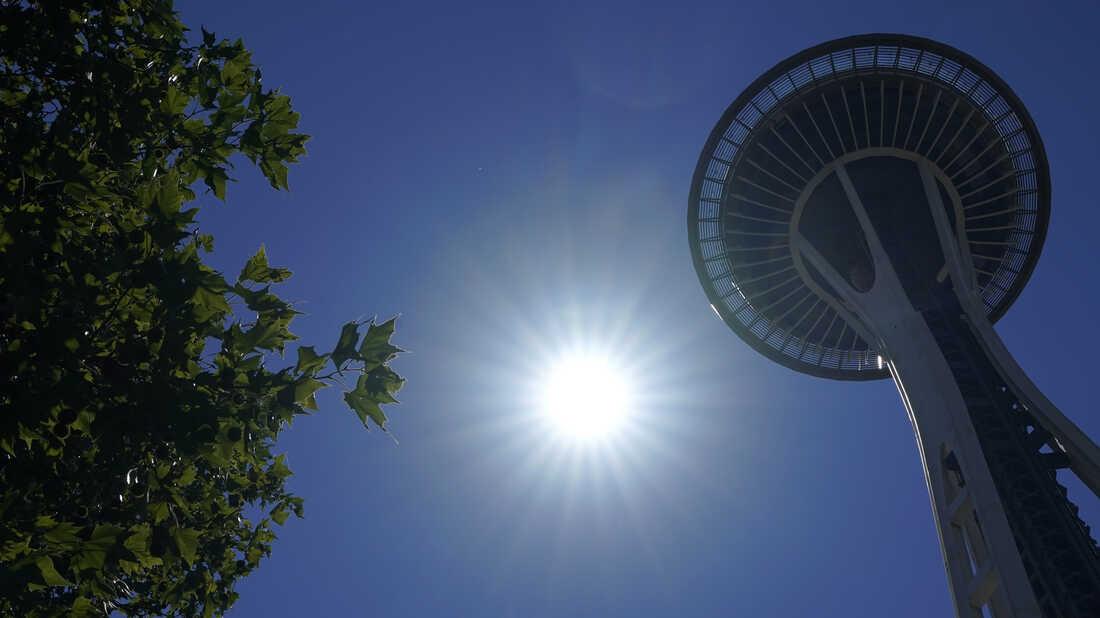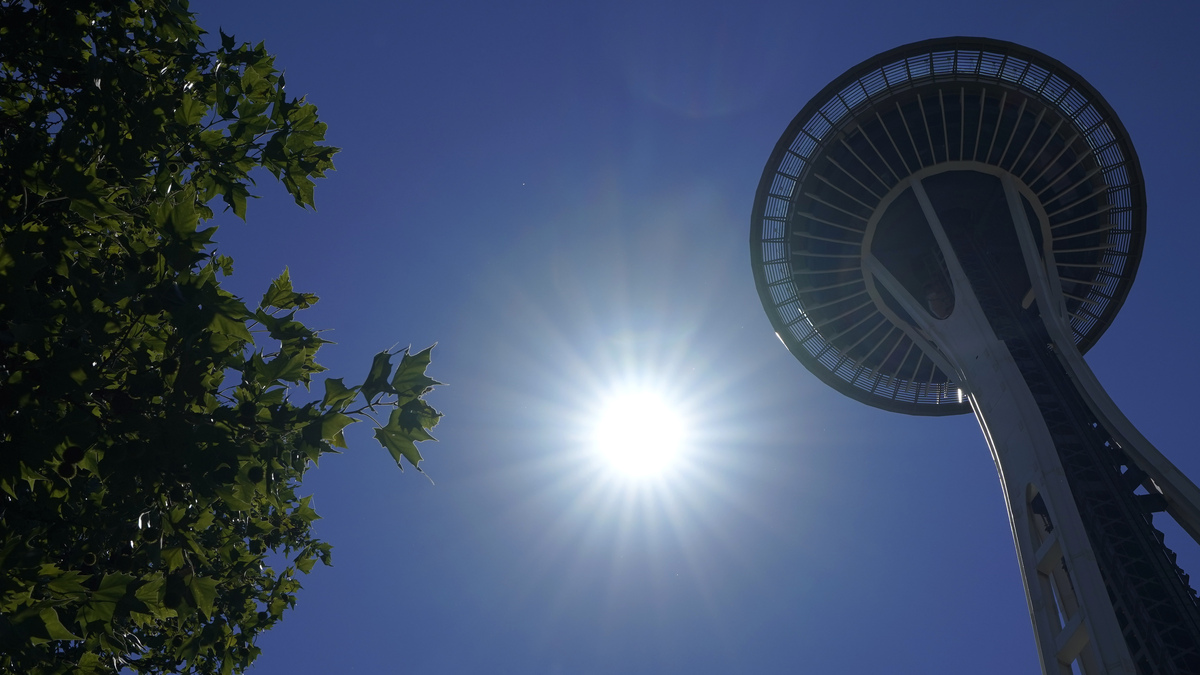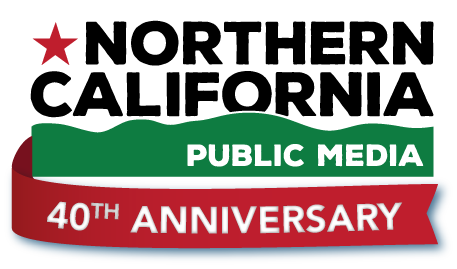
The sun shines near the Space Needle in Seattle. Seattle and other cities broke all-time heat records in back in June, with temperatures soaring well above 100 degrees Fahrenheit. Ted S. Warren/AP hide caption

The sun shines near the Space Needle in Seattle. Seattle and other cities broke all-time heat records in back in June, with temperatures soaring well above 100 degrees Fahrenheit.
Ted S. Warren/APHeatwaves aren't named like hurricanes and wildfires, but they kill more people each year than any other weather event, according to the Environmental Protection Agency (EPA).
In order to prevent future deaths in a warming world, city infrastructure must adapt, and perhaps redefine what "infrastructure" means. NPR's Jonaki Mehta reports on a group planting trees in south Los Angeles as a way to making the neighborhood cooler and safer.
In addition to expanding urban tree canopies, local governments around the country are looking at solutions like painting streets white, installing cooling roofs, and designing buildings with better airflow. But all those changes require funding, which can be hard to secure when heat has no owner or agency.
Kathy Baughman McLeod of the Adrienne Arsht Rockefeller Foundation Resilience Center is working with her team to create a process for naming and categorizing heat waves in order to create more public and government awareness about the toll of extreme heat.
This episode was produced by Lee Hale. It was edited Brianna Scott and Fatma Tanis. Our executive producer is Cara Tallo.

 Live Radio
Live Radio